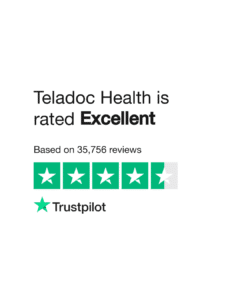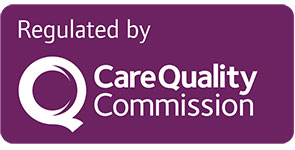What is Bone & Joint Week?
This national action week runs from the 12th-20th October, focussing on raising awareness about prevention, disease management and treatment for arthritis, back pain, trauma, paediatric conditions, and osteoporosis.
These common conditions are often referred to ask Musculoskeletal conditions as they affect bones, joints and soft tissues.
Why is Musculoskeletal health so important?
Over 20 million people in the UK (around a third of the population) live with a musculoskeletal condition, such as arthritis and low back pain (Global Burden of Disease Collaborative Network, 2020). 1 in 3 of all GP consultations relates to a MSK health complaint – many of which will relate to those conditions outlined above.
Pain is one of the leading symptoms of MSK conditions. However, people living with conditions like arthritis, also commonly experience high levels of fatigue, stiffness and loss of mobility and dexterity. Together these symptoms can steal life’s fundamentals, affecting how we move, think, sleep and feel, and even our ability to work and socialise.
To give you an idea of numbers, around 8.5 million people in the UK suffer from Osteoarthritis (a condition of the joints, commonly affecting the knees & hips) (Global Burden of Disease Collaborative Network,2020). A further 3 million people have Osteoporosis (reducing bone strength associated with age and some other risk factors), with about 500,000 fragility fractures occurring every year (National Institute for Clinical Excellence, 2018).
Symptoms caused by arthritis and related MSK conditions, result in a reduced quality of life. In addition, they can impact individuals ability at work, resulting in increased sick days, poor mental health, withdrawal from exercise and the increasing likelihood of suffering from other long-term conditions.
The burden on the economy and NHS is also significant. Treating the two most common forms of arthritis (osteoarthritis and rheumatoid arthritis) is estimated to have cost the economy £10.2 billion in direct costs to the NHS and wider healthcare system in 2017. Cumulatively, the healthcare cost will reach £118.6 billion over the next decade. (York Health Economics. 2017).
What can I do? Is it possible to prevent MSK conditions?
As I’ve outlined above, the impact and burden of MSK conditions is significant.
It’s not all bad news however, and as someone who is passionate about prevention of MSK conditions, there are some practical considerations for us all when it comes to improving our bone and joint health –
Exercise
The UK Chief Medical Officers’ Guidelines recommend that each week, adults (19-64 years) do at least 150 minutes of moderate intensity activity OR 75 minutes of vigorous activity, or a mixture of both. This is alongside strengthening activities on two days and reducing extended period of sitting. Now don’t get me wrong, this is great advice in terms of how much to do, but it’s so important to find something you enjoy doing.
Perhaps its online yoga or a hard afternoons work in the garden? It could be a gym class or a cycle to and from the office. Often people struggle to keep a new exercise routine, so it definitely pays to find something you enjoy.
So why is exercise important? We have loads of great research to support the benefits. Joint and back pain can be reduced by up to 25% (Choi et al, 2010), hip fractures by up to 68% (NG England, 2012) and falls reduced by a staggering 76% (Foster et al, 2017). Equally the mental health benefits are well documented, with a reduction in the risk of depression by up to 30% (Department of Health, Physical Activity, Health Improvement and Protection,
(2011). It’ll also make you feel better- reducing stiffness, improving mobility and dexterity.
Maintain a Healthy Weight
We all know that carrying a bit more weight than we should, is typically not healthy. Unfortunately, obesity also increases an individual’s risk of developing MSK conditions, such as osteoarthritis and back pain.
Equally, if you’re underweight, your risk of osteoporosis and fragility fractures also increases. To protect your bones, especially as you get older, you should aim to keep your body weight within a range that is healthy. It’s actually quite easy to work out what your weight should be, by using your body mass index or BMI. Your BMI can inform you if you are within a healthy weight range based on your height.
You can easily calculate your BMI yourself, by following these steps:
- Measure your height in metres (h) and multiply the figure by itself
- Measure your weight (w) in kilograms.
- Divide your weight by the number you calculated in step 1 (your height squared) i.e. BMI = w/(h x h)
- There are many online resources to find out what your BMI means.
Get some sunshine!
We all love a holiday in the sun, but did you know the sun is vital for our bones and joints? Vitamin D helps your body absorb and use calcium, which gives bones their strength and hardness. It also helps your muscles stay strong, which reduces your risk of breaking a bone in a fall. There are three ways you can get vitamin D:
- from safe sunlight exposure (remember you still need to weak sunscreen during the spring/summer months)
- from your diet
- from vitamin D supplements, if needed (speak to your GP if you are unsure)
Eating well
Not only does eating well give you the necessary nutrition for health and wellbeing, but it also gives you energy to move and be active.
Certain food groups are required in our diet to maintain good bone health. Calcium and Vitamin D are well known nutrients required for healthy bones among others. Aim to have a healthy, balanced diet with meals from a combination of fruit and vegetables, carbohydrates (such as potatoes, pasta, cereals), dairy and alternatives and proteins (such as beans, eggs, fish, and meat).
Smoking & Alcohol
Smoking unfortunately impacts the cells that build bone in your body. This means you can reduce your bone strength and increase your risk of a fracture.
If you’re a woman, smoking also increases your chances of an earlier menopause. Postmenopausal women have an increased risk of osteoporosis and fracture risk. People who smoke are also found to be at higher risk of breaking a hip as they get older.
Even if you’ve been a smoker for years, it’s not too late. If you work towards giving up smoking, your risk of breaking a bone begins to return to normal.
Alcohol in moderation won’t impact on your bone and joint health. However, drinking a lot increases your risk of osteoporosis. The government recommends no more than 14 units of alcohol a week, spread across three days or more. It’s good to have nondrinking days also.
What does a unit of alcohol look like? Half a pint of beer or cider or a single gin, whisky or brandy (25ml). Surprisingly, a small glass of wine actually equates to 1.5 units!
In summary – Any small or large lifestyle changes we can make, can have a significant positive impact over time, allowing us to live better, longer lives and reducing the consequences of MSK conditions.









